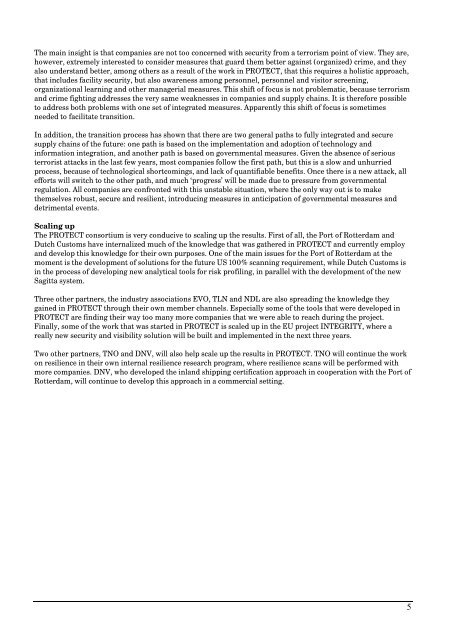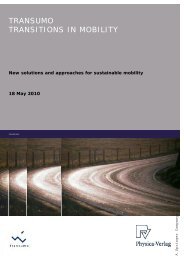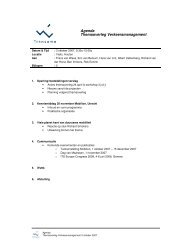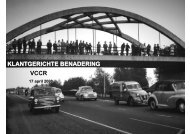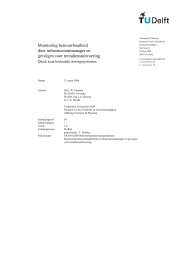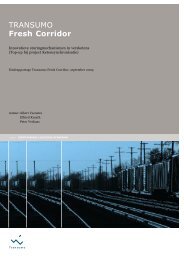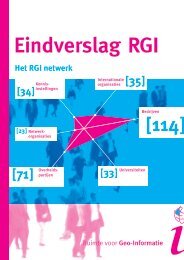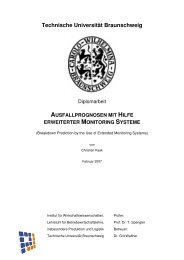Klik hier - Transumo
Klik hier - Transumo
Klik hier - Transumo
You also want an ePaper? Increase the reach of your titles
YUMPU automatically turns print PDFs into web optimized ePapers that Google loves.
The main insight is that companies are not too concerned with security from a terrorism point of view. They are,<br />
however, extremely interested to consider measures that guard them better against (organized) crime, and they<br />
also understand better, among others as a result of the work in PROTECT, that this requires a holistic approach,<br />
that includes facility security, but also awareness among personnel, personnel and visitor screening,<br />
organizational learning and other managerial measures. This shift of focus is not problematic, because terrorism<br />
and crime fighting addresses the very same weaknesses in companies and supply chains. It is therefore possible<br />
to address both problems with one set of integrated measures. Apparently this shift of focus is sometimes<br />
needed to facilitate transition.<br />
In addition, the transition process has shown that there are two general paths to fully integrated and secure<br />
supply chains of the future: one path is based on the implementation and adoption of technology and<br />
information integration, and another path is based on governmental measures. Given the absence of serious<br />
terrorist attacks in the last few years, most companies follow the first path, but this is a slow and unhurried<br />
process, because of technological shortcomings, and lack of quantifiable benefits. Once there is a new attack, all<br />
efforts will switch to the other path, and much ‘progress’ will be made due to pressure from governmental<br />
regulation. All companies are confronted with this unstable situation, where the only way out is to make<br />
themselves robust, secure and resilient, introducing measures in anticipation of governmental measures and<br />
detrimental events.<br />
Scaling up<br />
The PROTECT consortium is very conducive to scaling up the results. First of all, the Port of Rotterdam and<br />
Dutch Customs have internalized much of the knowledge that was gathered in PROTECT and currently employ<br />
and develop this knowledge for their own purposes. One of the main issues for the Port of Rotterdam at the<br />
moment is the development of solutions for the future US 100% scanning requirement, while Dutch Customs is<br />
in the process of developing new analytical tools for risk profiling, in parallel with the development of the new<br />
Sagitta system.<br />
Three other partners, the industry associations EVO, TLN and NDL are also spreading the knowledge they<br />
gained in PROTECT through their own member channels. Especially some of the tools that were developed in<br />
PROTECT are finding their way too many more companies that we were able to reach during the project.<br />
Finally, some of the work that was started in PROTECT is scaled up in the EU project INTEGRITY, where a<br />
really new security and visibility solution will be built and implemented in the next three years.<br />
Two other partners, TNO and DNV, will also help scale up the results in PROTECT. TNO will continue the work<br />
on resilience in their own internal resilience research program, where resilience scans will be performed with<br />
more companies. DNV, who developed the inland shipping certification approach in cooperation with the Port of<br />
Rotterdam, will continue to develop this approach in a commercial setting.<br />
5


